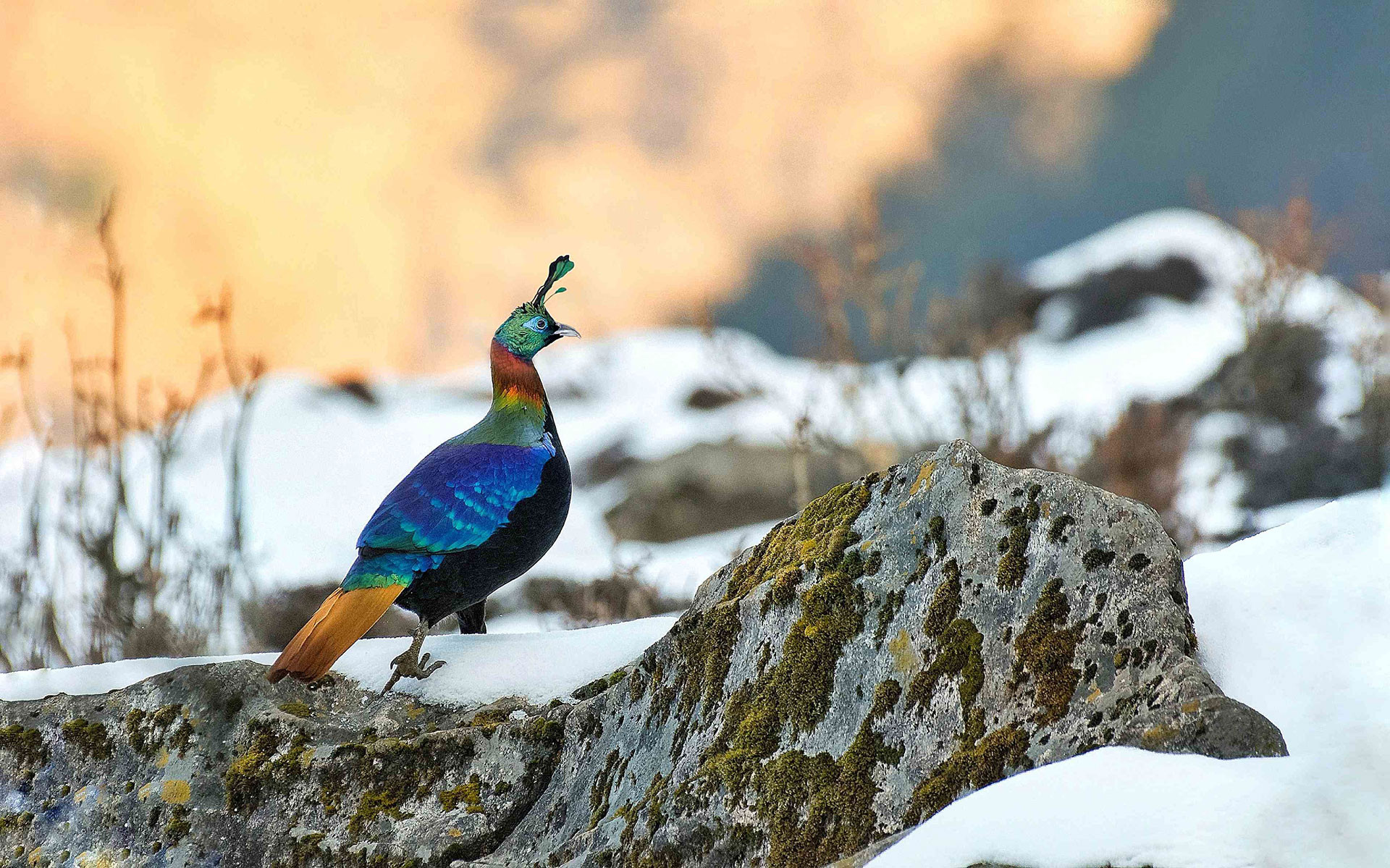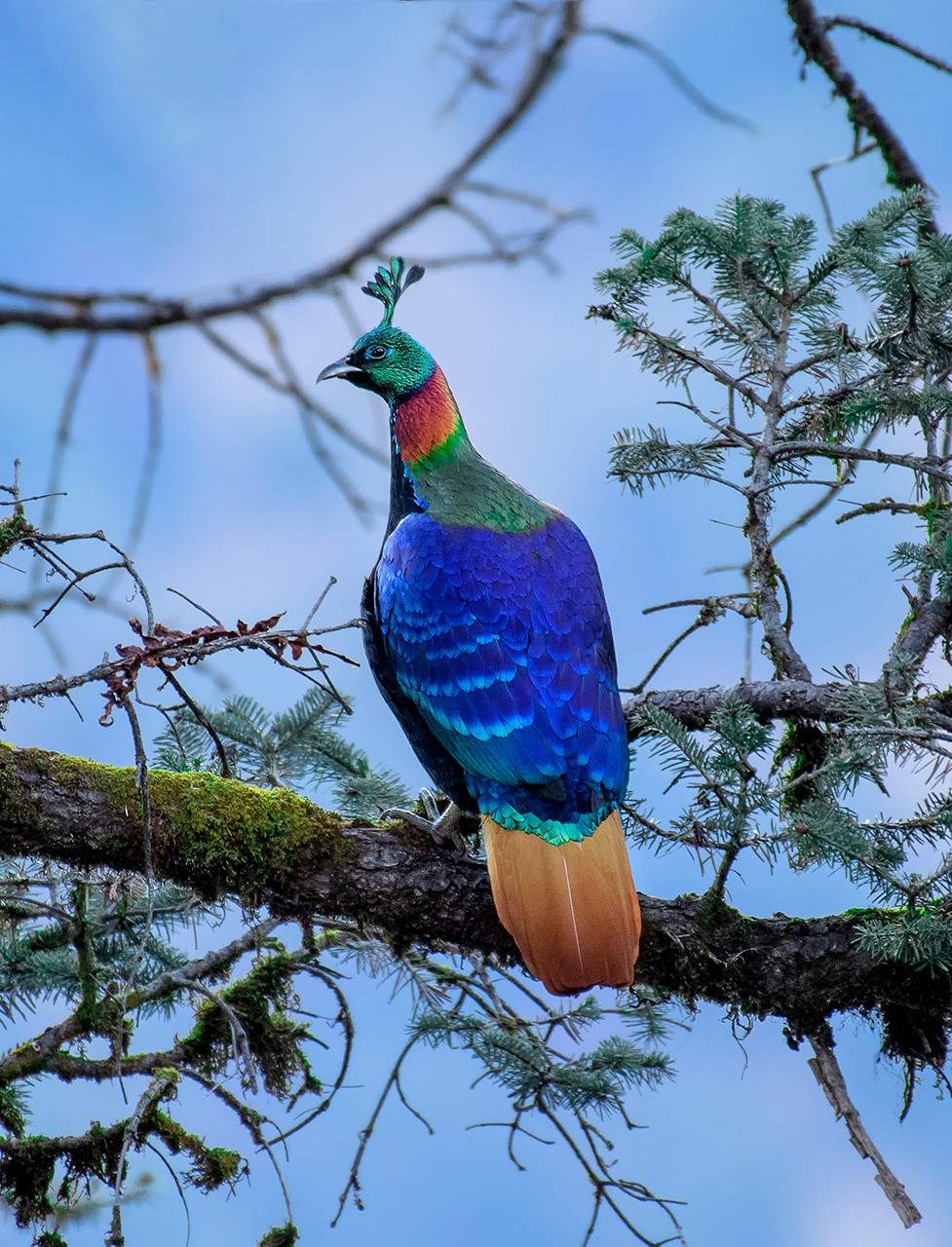There is something about encountering a Himalayan Monal.
Whether you are one of the lucky ones to witness this bird in all its glory in person or you are just looking at a photograph—the Himalayan Monal always leaves an impression. Over the years, we have received numerous Himalayan Monal images—of its colours glistening in the sunlight against the backdrop of Sikkim's hilly terrain, perched on a cliff or as an iridescent blot of colour amid white snow. We would be lying if we did not say that we are utterly fascinated by the Himalayan Monal. So here is an entire story dedicated to this handsome bird!
Before we get onto their morphology, habitats and mating rituals, how about some fun facts? Did you know that Himalayan Monals are frequently mentioned in Nepali songs? They are called Danfe in the local language. They are also known to have a range of calls to express everything from raising an alarm to calling out to a potential mate. Definitely, not the ones to shy away from communication.
Himalayan Monals can also dig up to 25cm in the ground while looking for food. They have strong claws and beaks that help them dig deep while foraging for insects, roots and seeds. In fact, they leave behind distinct patterns in the snow when they forage. Looks like there is a lot to unearth about this bird. Let's get started, shall we?
Colour on White
The Himalayan Monal (Lophophorus impejanus) is one of the iconic pheasants from the Himalayas—the national bird of Nepal, the state bird of Uttarakhand—owing to the spectacular iridescent plumage and stunning metallic colours seen in the males. They are among the larger birds in the Phasianidae family, measuring about 70cm in length and ranging from 1.8kg to 2.3kg in weight. The species exhibits high sexual dimorphism—the males decked head to toe in multicoloured plumage and exhibiting a long green metallic crest, while the females have a pale blue eye patch, white throat, and a streaky brown body.
The High Life
The Himalayan Monal's natural range extends from eastern Afghanistan and through the Himalayas to China, including Pakistan, India, Bhutan, Nepal and Myanmar. The species occupies the upper temperate forests of conifer and oak with open grasslands, between the elevational ranges of 2400–4500m, with a preference for sub-alpine oak forests in spring and conifer-dominated forests during winter. The pheasant is observed to exhibit high levels of altitudinal migration and is seen at altitudes as low as 2000m.
You may also like to read
Eat Your Greens
The Himalayan Monal diet primarily consists of tender leaves, shoots, tubers, nuts and insects and other invertebrates. A diet study of threatened Himalayan pheasant species revealed that plant matter made up a large part of the diet, although invertebrate matter was also present in low percentages. In monals, the primary sources were rare plants such as Nordostachis jatamansi, Potentilla fulgens and Artemisia nilagirica. They have been observed to dig out snow for shoots and invertebrates.
Dancing Through Snow
Not the ones for subtlety, the male Himalayan Monal is known for its elaborate courtship displays, which involves breaking into dance-like moves and displaying its colourful plumage. They also flash the bright white patch on their backs. The breeding season for monals is between April and August when they form monogamous pairs. Post mating, females are known to scrape nests on the ground. The female lays 3-6 eggs, which are incubated for about a month. Male monals closely guard the females during this period. Monal chicks become independent at six months of age.
Protect The Monal
Himalayan Monals are designated as Least Concern by the IUCN Red List, but their population trend is decreasing. Hunting and habitat loss are the significant threats that the avians face, and a lack of adequate studies hampers the understanding of the various threats. Being ground-dwelling birds, monals are impacted significantly by other anthropogenic factors such as habitat degradation and pollution. They are also frequently hunted for their colourful feathers and their crests which are considered symbols of authority.
Although the Himalayan Monals are widely photographed and documented, there is a lack of awareness when it comes to understanding how various anthropogenic factors are influencing their habitats. As denizens of the high mountains, climate change and loss of biodiversity are greatly impacting local populations. As much as we are mesmerised by the Himalayan Monals, we also need to find a way to protect them and help them thrive in flying colours.










